What Is Infrastructure as a Service?
Munish Singh
Feb 19, 2024
Infrastructure as a Service (IaaS) has become a foundational cloud computing service model, providing organizations on-demand access to fundamental computing infrastructure over the Internet. This guide will explore what IaaS entails, its capabilities, use cases, leading providers, and its overall role in modern IT.
Introduction to IaaS
Infrastructure as a Service (IaaS) refers to cloud-based services that provide users with scalable and flexible computing infrastructure, including servers, storage, networks, and operating systems. Rather than purchasing and managing physical infrastructure, users can provision these fundamental computing resources on-demand from a cloud provider.
IaaS delivers dynamic scalability to equip organizations with infrastructure tailored to their needs. Users pay for IaaS on-demand, benefiting from a consumption-based model. IaaS removes the headache of procuring, maintaining, and modernizing hardware systems on-premise.
IaaS powers a wide range of workload applications and serves as a key building block of cloud computing alongside PaaS (Platform as a Service) and SaaS (Software as a Service). It enables modern IT environments to be agile and flexible.
Understanding Cloud Infrastructure as a Service
At its core, Infrastructure as a Service (IaaS) provides users with instant computing power, storage, and network capabilities without the need to build the physical infrastructure themselves. This on-demand infrastructure is enabled through virtualization technology across large networks of servers in highly resilient data centers managed by the cloud provider.
With IaaS, organizations can seamlessly scale up infrastructure when demand grows and scale down when needs decrease. Businesses only pay for what they utilize, avoiding the capital costs of provisioning and managing their hardware on-premise.
IaaS offers pre-configured templates that allow fast deployment of infrastructure ranging from single servers to multi-tier architectures. Demand-driven automation and self-service management eliminate tedious hands-on infrastructure tasks. IaaS delivers robust disaster recovery mechanisms to backup and restore data as needed.
By offloading infrastructure management to IaaS providers, organizations can focus their talent and resources on driving innovation through applications and workloads tailored to business needs.
Infrastructure as a Service (IaaS) Examples
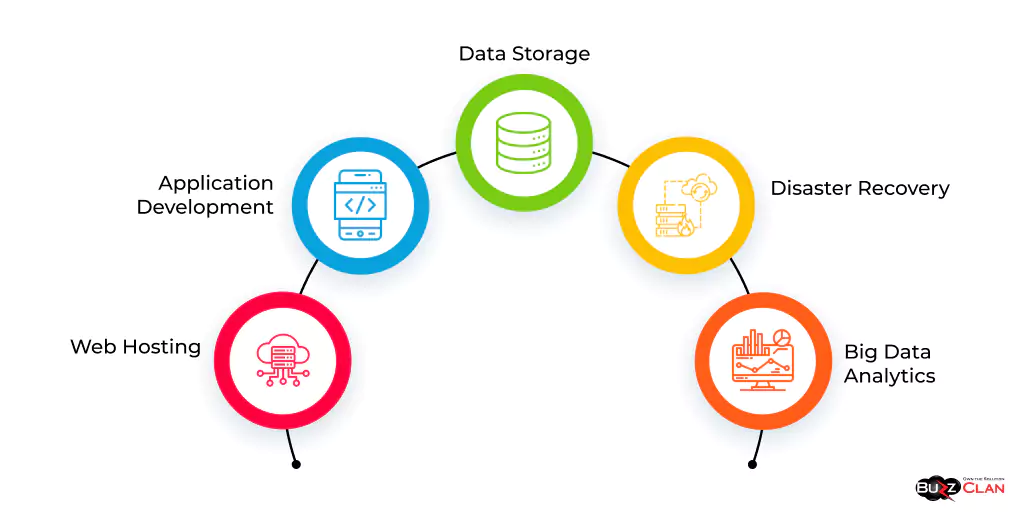
IaaS powers a diverse range of workloads and use cases. Here are some examples of IaaS in action:
Web Hosting
IaaS offers a flexible and scalable alternative to traditional web hosting. Instead of complex on-premise infrastructure, companies can launch web servers on virtual machines and pay per usage. Storage, databases, and caching are instantly available. Cloud vendors handle maintenance and scaling. Popular options include Amazon EC2, Linode, and DigitalOcean.
Application Development
IaaS provides developers instant access to infrastructure for rapid coding and testing of applications. Environments can be spun up and down on demand. Teams can replicate diverse production infrastructure scenarios without procuring hardware. VMs and containers enable streamlined deployment.
Data Storage
For cost-efficient, durable storage of rapidly growing data, most companies turn to IaaS storage such as Amazon S3, Azure Blob, or Google Cloud Storage—capacity scales seamlessly while redundancy ensures high availability. Data lakes, data warehouses, and backup repositories benefit from IaaS.
Disaster Recovery
IaaS simplifies disaster recovery preparations without secondary data center costs. VMs can be pre-configured as standby systems. Geographically diverse resource pools prevent localized outages. Backups can be replicated across regions. Recovery automation makes testing and failover faster.
Big Data Analytics
IaaS fulfills the vast infrastructure needs of big data platforms in a flexible, granular manner. Hadoop, Spark, and SQL data warehouses can leverage clusters of cloud servers, object storage, and high-speed networking for analytics. Cloud data services integrate seamlessly.
Almost any traditional on-premise IT infrastructure application can be transitioned to or rearchitected for IaaS environments to enhance agility, resilience, and TCO. The use cases are practically limitless.
IaaS vs PaaS vs SaaS
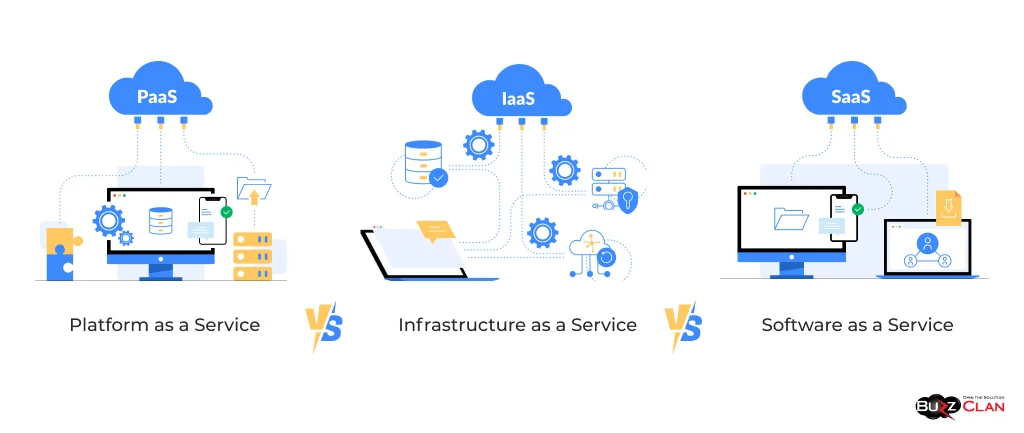
IaaS, PaaS, and SaaS represent the three primary service models in cloud computing:
- IaaS - Infrastructure as a Service provides users with on-demand access to fundamental computing resources, including servers, storage, network, and operating systems. IaaS offers the most flexibility but requires management.
- PaaS - Platform as a Service offers a fully managed platform to develop, deploy, and manage cloud-based applications without building underlying infrastructure.
- SaaS - Software as a Service provides applications over the cloud, usually on a subscription basis. Users don't manage infrastructure or platforms.
IaaS provides more control over infrastructure than PaaS or SaaS but requires IT skills to configure and orchestrate resources. SaaS offers the most turnkey usage experience but the most minor customization. PaaS strikes a balance, empowering rapid development without infrastructure burdens.
Organizations combine these service models based on application needs, technical capabilities, and economic priorities. IaaS and PaaS enable SaaS applications to deliver user experiences.
Benefits of Infrastructure as a Service
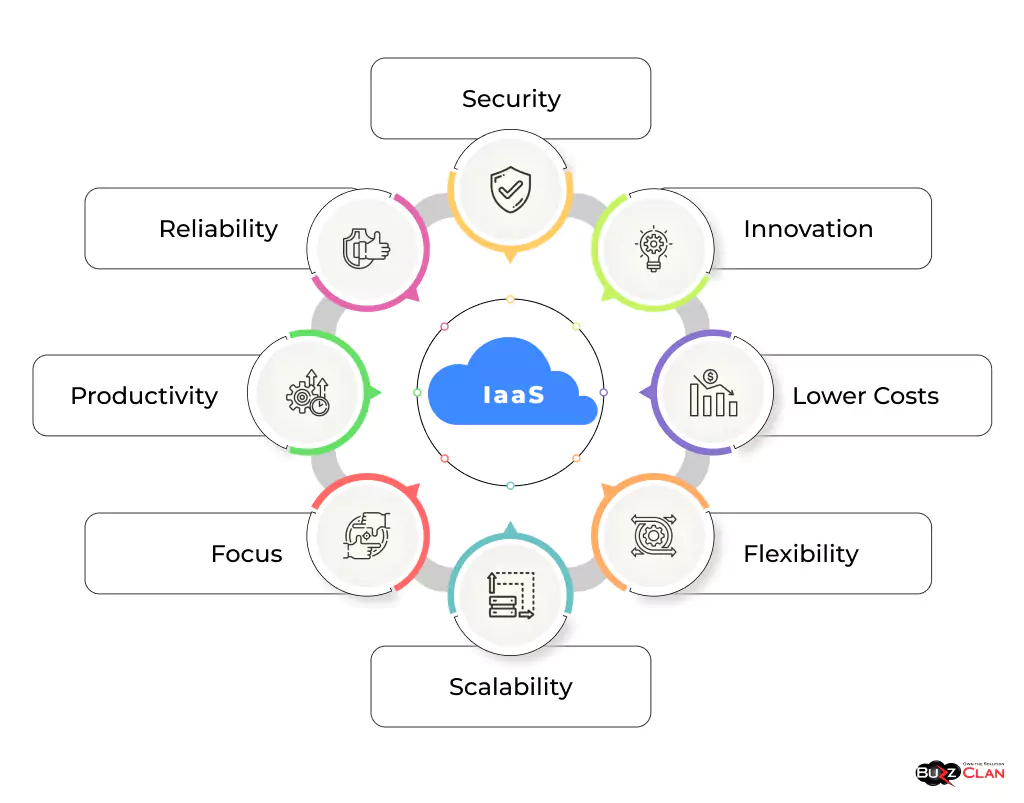
There are numerous advantages to leveraging IaaS solutions:
- Lower Costs- IaaS eliminates upfront capital expenditure on hardware and data centers. The pay-as-you-go model adjusts costs based on real-time usage. Scaling back during periods of decreased demand brings savings.
- Flexibility - Infrastructure can be quickly provisioned, modified, or de-provisioned on-demand to accommodate fluctuating business needs.
- Scalability - IaaS enables instant and seamless scaling to support application traffic or storage demand spikes. Geographic expansion is simplified.
- Innovation - Freed from hardware constraints, organizations can rapidly deploy new technologies to innovate and build competitive advantage.
- Focus - IaaS removes the burden of low-level infrastructure tasks so teams can focus on productive, higher-value activities.
- Productivity - On-demand infrastructure, automation, and self-service management allow faster delivery of resources to improve developer productivity.
- Reliability - Leading IaaS providers offer enterprise-grade reliability and redundancy far exceeding what most organizations can build internally.
- Security - Economies of scale enable IaaS providers to implement robust security practices and controls exceeding on-premise environments.
IaaS Use Cases
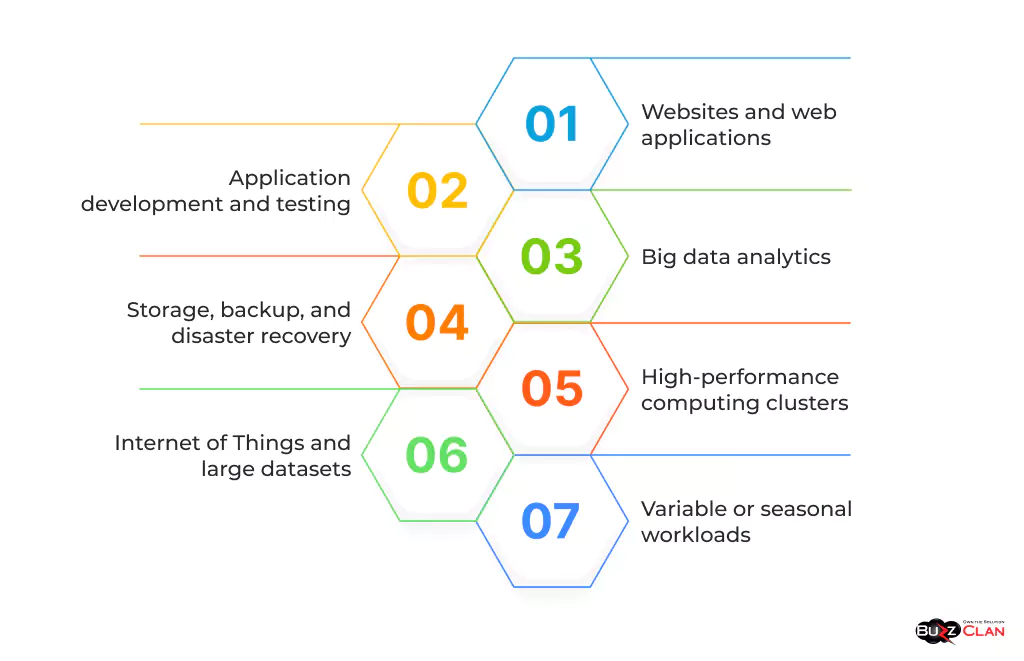
IaaS can benefit these business applications:
- Websites and web applications
- Application development and testing
- Big data analytics
- Storage, backup, and disaster recovery
- High-performance computing clusters
- Internet of Things and large datasets
- Variable or seasonal workloads
Key Components of IaaS
IaaS cloud platforms provide several fundamental computing resources:
Cloud Servers
Virtualized cloud servers or computer instances are the backbone of IaaS. Often called virtual machines (VMs), cloud servers provide scalable computing capacity using physical server hardware pooled through virtualization to create virtual resources.
Cloud servers offer CPU, memory, networking, and operating system capabilities. IaaS can provide automated, on-demand servers that execute workloads with optimal performance and scalability by utilizing an effectively limitless pool of virtualized infrastructure.
Cloud Storage
Cloud storage provides users with on-demand data storage capacity. Storage infrastructure may utilize hard disk, solid-state, or tape drives. IaaS storage offerings include object storage, block storage, cold storage, content delivery networks, and more.
Storage can be provisioned instantly, scaled seamlessly, and managed through automation rather than needing physical administration. Redundancy mechanisms deliver high resilience. Cloud storage enables workloads to access shared data repositories.
Networking
Cloud networking provides secure connections between computing and storage resources in an IaaS environment. This includes private connections, virtual networks, subnet isolation, firewalls, load balancers, gateways, VPNs, and more.
Robust networking infrastructure allows IaaS platforms to provide high-performance connectivity and communication between workloads, applications, and services. Automation ensures network capacities adapt elastically.
Leading IaaS Providers
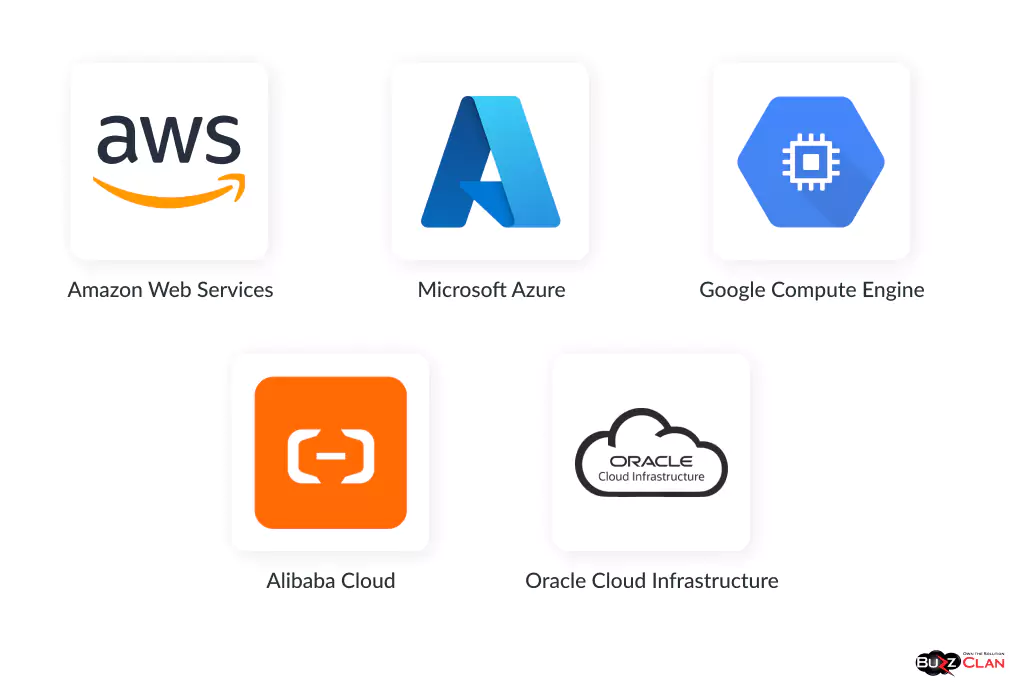
Major IaaS providers include:
- Amazon Web Services - The most mature, extensive cloud IaaS platform. Offers 200+ services, including EC2 virtual servers, S3 storage, VPC networking, and Lambda serverless computing. Known for innovation and ecosystem.
- Microsoft Azure - Enterprise-focused IaaS platform tightly integrated with Microsoft's SaaS offerings. Strengths in hybrid cloud, AI, and application modernization.
- Google Compute Engine - Part of Google Cloud Platform. Fast performance, automated scaling, and preemptible VMs. Focused on containerized applications.
- Alibaba Cloud - Popular in Asia. Strengths in e-commerce solutions and big data analytics. Cost-effective, high-performance infrastructure.
- Oracle Cloud Infrastructure - Rapidly growing. Focus on high-performance computing and enterprise applications. Strong hybrid capabilities.
Many other niche and emerging IaaS providers also excel in specific solution areas or geographies. Most providers offer discounted pricing and free tiers for early development and testing needs.
IaaS vs PaaS
Comparing IaaS vs. PaaS helps determine the suitable service model for a workload.
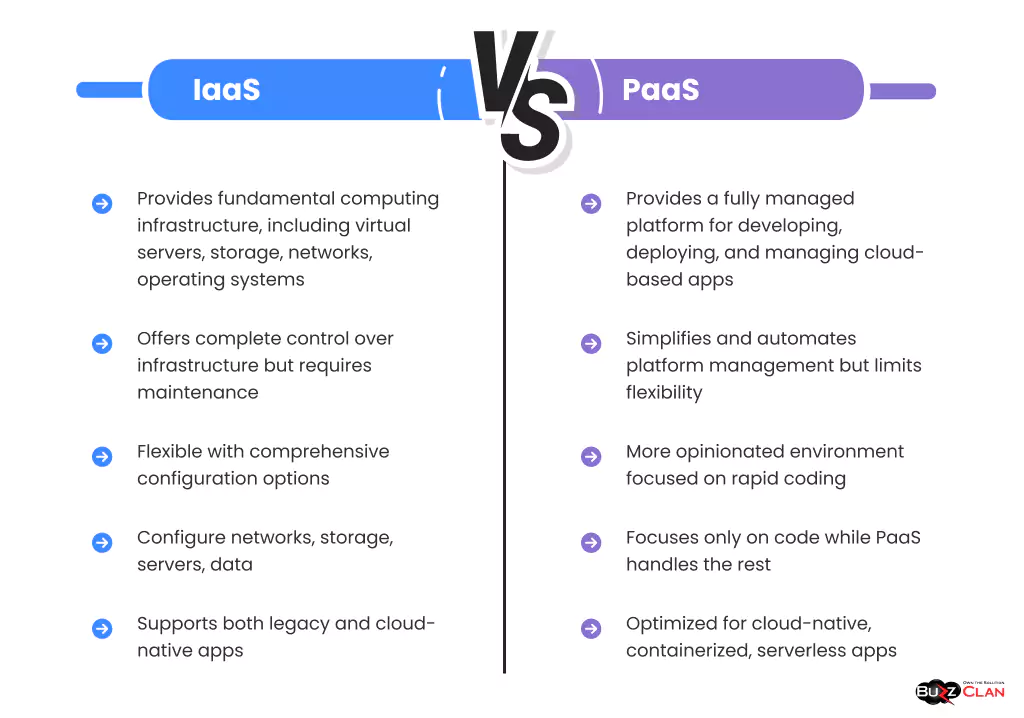
IaaS and PaaS can complement each other. PaaS builds on top of IaaS. IaaS provides infrastructure for PaaS while PaaS simplifies application deployment on IaaS.
Platform as a Service
Platform as a Service (PaaS) provides developers with a fully managed environment to develop, deploy, host, and manage cloud-based applications without managing the underlying infrastructure.
PaaS typically includes capabilities like:
- App hosting configurations
- Development tools
- Database management
- Business Analytics
- Security, backup, monitoring
- Scalable storage
- Team collaboration abilities
- APIs and SDKs
- CI/CD automation pipeline
Leading PaaS examples include AWS Elastic Beanstalk, Microsoft Azure, Salesforce Platform, and Red Hat OpenShift.
Implementing IaaS in the Cloud
Adopting IaaS involves migrating or building new applications on virtualized infrastructure accessed over the cloud:
- Choose a provider - Evaluate leading IaaS vendors based on capabilities, costs, and service-level agreements. Multi-cloud utilization is common.
- Audit workloads - Assess all application workloads to determine suitability for cloud IaaS based on traffic, security needs, dependencies, and features.
- Migrate apps - For existing apps, incrementally port to IaaS through re-platforming or refactoring methods.
- Modify - Update application code, access mechanisms, and configurations for optimal performance and reliability in the cloud.
- Build new apps - Construct cloud-native applications from the ground up to fully utilize IaaS strengths.
- Secure - Implement robust identity and access controls, data encryption, firewall policies, monitoring, backups, and disaster recovery.
- Optimize - Right-size and continuously tune infrastructure usage to balance performance and costs—leverage automation to scale dynamically.
The Evolution of IaaS
Introduced to the market in the early 2000s by pioneers like Amazon Web Services, IaaS adoption has expanded significantly over the past decade. IaaS spending is projected to grow at over 30% per year through 2025.
The rise of IaaS has opened the door to modern IT environments built on cloud economies and automation. Hardware constraints no longer hinder productivity—sophisticated capabilities like artificial intelligence, the Internet of Things, and high-performance computing leverage on-demand IaaS infrastructure.
Future IaaS directions involve multi-cloud interoperability, serverless computing, edge infrastructure localization, and hybrid cloud capabilities extending into on-premise environments. IaaS will continue to empower digital transformation across industries.
Conclusion
In summary, Infrastructure as a Service (IaaS) enables businesses to deploy and scale computing infrastructure on-demand over the cloud. By removing the heavy lifting of procuring and maintaining physical hardware and data centers, IaaS empowers organizations to adapt their technology environments to evolving business priorities smoothly.
IaaS drives modern IT with its ability to deliver automated, elastic infrastructure. When combined with PaaS and SaaS, businesses gain tremendous agility to experiment, innovate, and transform at cloud speed. As technology complexity increases, dependable turnkey infrastructure becomes ever more indispensable. IaaS has cemented itself as a foundational pillar of enterprise cloud computing.
FAQs

Get In Touch
